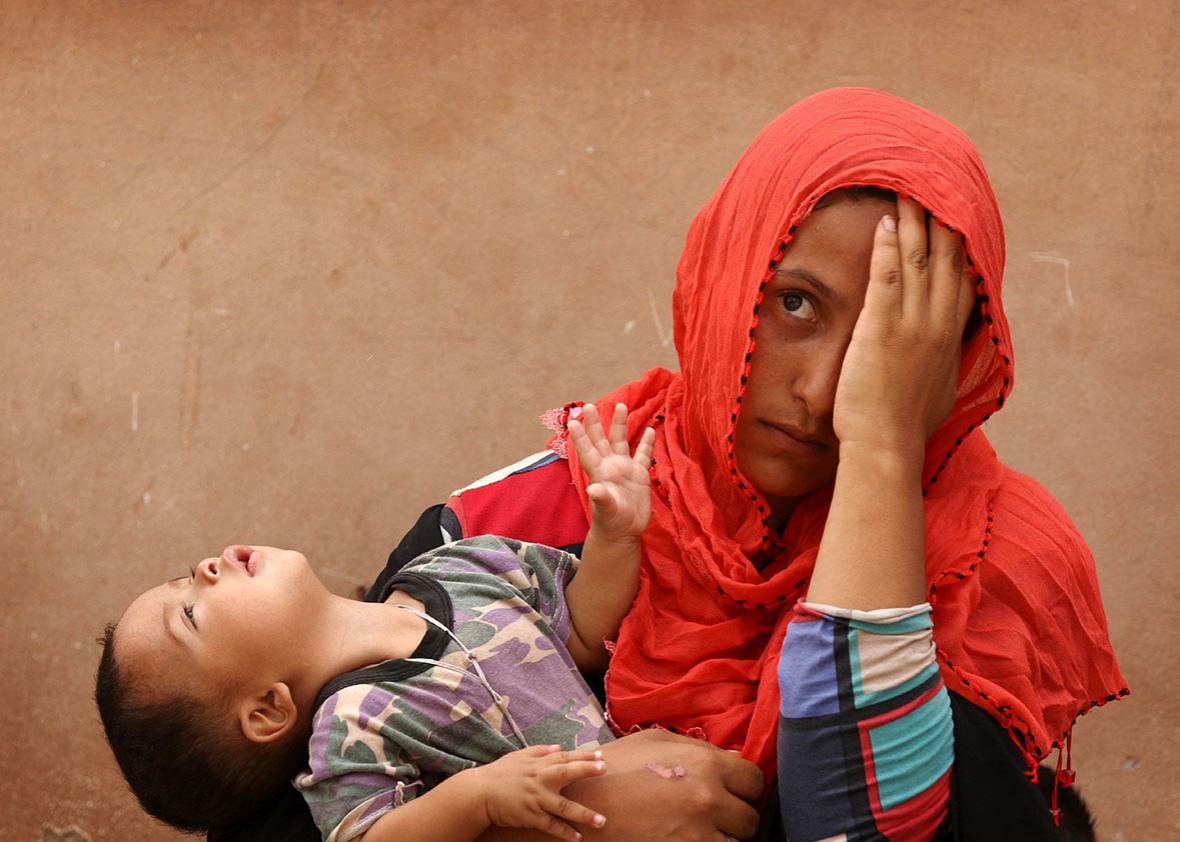Mahmoud Arif Sarokhar wanted to express his appreciation for America. It was a blazing hot afternoon in July, and we were standing on the dusty main thoroughfare of the Kawergosk refugee camp, about 30 minutes from Erbil, the capital of the Kurdish region of Iraq. The camp was home, at that time, to more than 10,000 Kurdish refugees from across the border in Syria.
Sarokhar explained to me why, when he left war-torn Syria in 2013, he chose to come to Northern Iraq, where he was living in a tent at Kawergosk. “It’s governed by the United States,” he told me, referring to America’s backing of the Kurdistan Regional Government. “Wherever Americans support is safe.”
I thought about Sarokhar, so confident that the United States would protect him, after the president of the United States signed an executive order barring refugees from seven Muslim countries, including Syria and Iraq, last week. Sarokhar doesn’t actually identify with either of those countries—he is a proud, nationalistic Kurd— but because of the nation-state he was born within and the religion he follows, this 62-year-old father of 13 is now viewed as a danger by the most powerful nation on Earth.
I also thought of Basim Ahmed, a 15-year-old from outside Mosul, Iraq, who had seen his cousin thrown from a tall building by ISIS because he was a government employee. Ahmed, who I met at the Dibaga displaced persons camp in Kurdistan, told me he wanted to “fight Da’esh,” using the local name for ISIS. But fighting America’s enemies, or even directly aiding American forces, no longer removes you from the administration’s list of potential threats.
I met Ahmed and Sarokhar while researching a book on how borders change and new countries are created. It was no coincidence that this research put me in contact with refugees, displaced people, and citizens of the majority of the countries on Donald Trump’s list; the challenging of decades-old national borders, the flourishing of violent extremism, and an unprecedented displacement of people around the world are all interconnected problems. They are also problems the current administration has decided can be fixed with a combination of political disengagement, bombing campaigns, and visa bans.
Trump’s executive order was not only morally unjustifiable and arguably illegal under U.S. law—it’s tragically shortsighted as a matter of strategy. There are more than 65.3 million displaced people in the world today. That’s not a population that’s going to simply go away. The effects of yawning economic inequality and climate change, not to mention Trump’s own likely plans to ramp up airstrikes in the Middle East and give Russia a free pass to support separatist movements in Ukraine, will only increase that population.
While most media attention in the United States has focused on the refugees attempting to enter North America or Europe, it’s the neighboring countries in the Middle East and Africa, often faced with poverty and instability themselves, that are bearing the brunt of the current crisis. I met Abdullah Nasir Abdullah, an electrician and single father of seven children from Taiz, Yemen, in one of those places. We spoke in a dilapidated house on the outskirts of Hargeisa, the capital of Somaliland, an unrecognized state in northern Somalia. While it’s one of the poorest places on Earth and offers little in the way of aid or economic opportunities, Somaliland is currently a safer bet for Abdullah’s family than Yemen, where his car and shop were burned and where, at the time we spoke, one of his children still remained, unaccounted for. Cutting off escape routes, as a U.S. refugee ban does, will only put more pressure on places like Somaliland, raising the risk that crisis and violence will spread.
American liberals shouldn’t kid themselves about the level of openness that existed before Trump. Under Barack Obama, the U.S. took in an embarrassingly paltry number of Syrian refugees. As one frustrated engineer in a camp in Iraq who was contemplating giving up and going back to Syria told me last summer, “No countries are taking in Syrians these days.” But now, rather than trying to engage productively in one of the most pressing social challenges of our time, the United States is putting up walls, literal and metaphorical. What Trump is doing will make the problem worse, and the U.S. won’t be immune from the consequences.
At the same camp where I met 15-year-old Ahmed, I also met Maryam Mahmoud, a mother from near Mosul. Mahmoud told me, “When we first came [to Kurdistan], some children were shouting at us, ‘You are Da’esh.’ But we said, ‘No, we were killed by Da’esh. Not all of us are Da’esh. My son was martyred fighting with you against Da’esh.’ ” The current U.S. government is now acting with the same level of maturity and political understanding as the children who taunted her family.
